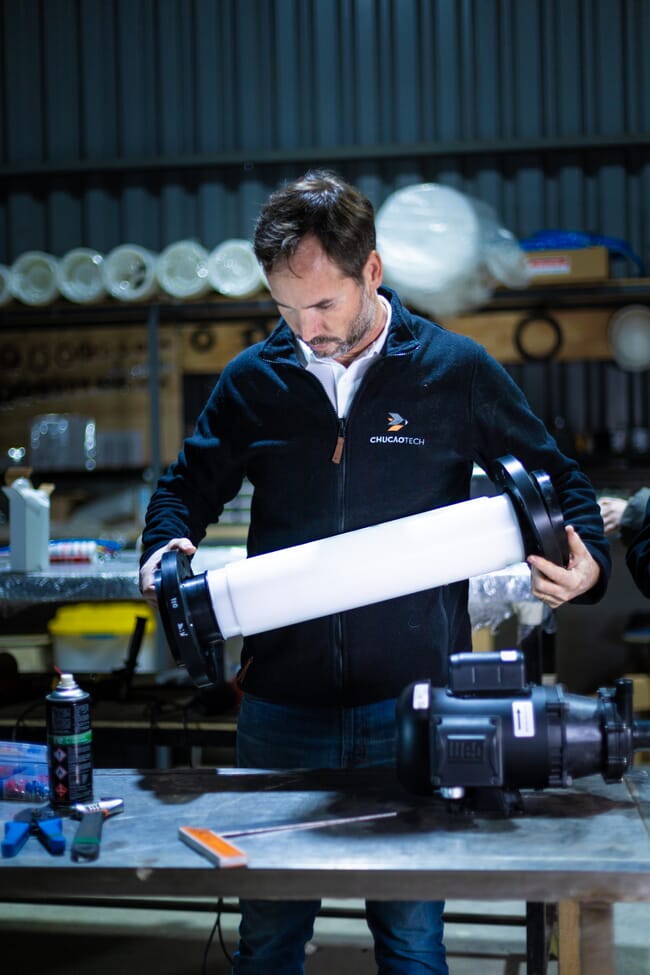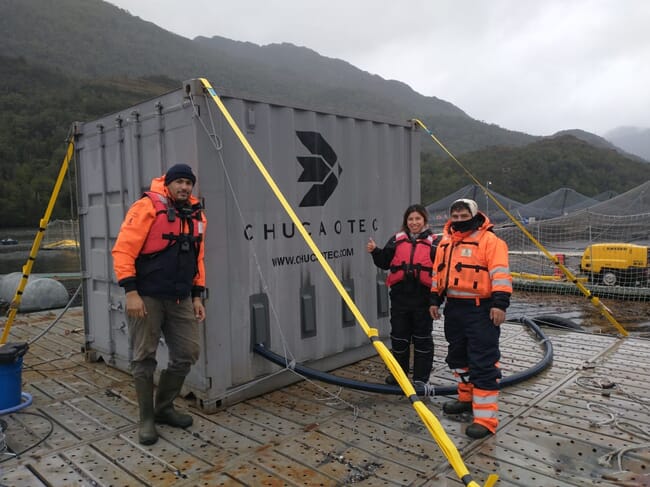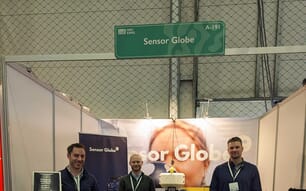
© ChucaoTech
A mechanical engineer by training, Puga's early career began high in the Chilean desert.
“I worked for three years in the ALMA Observatory, the large radio telescope in the north of Chile,” he recalls.
But product design was his main ambition, and a scholarship to the University of Cambridge led to a dream job with Cambridge Consultants, designing consumer products in the UK.
“It was my real school,” he says. “But after a few years, I returned to Chile – drawn by nature – and moved south.”
That move put Puga at the heart of Chile’s salmon farming industry. He joined Sealand Aquaculture as chief engineer at one of the country’s largest recirculating aquaculture system (RAS) smolt facilities.
“That was my first approach to aquaculture. I learned the ins and outs of water treatment, fish health and rearing,” he recalls.
It also sowed the seeds for ChucaoTech.
In 2017, Puga met Tomas Bravo, who’d recently gained an MBA from Imperial College. Together, they launched Chucao Technology Consultants, originally intended as a broad engineering consultancy for salmon farmers.
“It didn’t work out as we’d hoped,” Puga admits, “but one challenge really stood out – seabed pollution.”
Open-net salmon farming creates a plume of organic waste from uneaten feed and fish faeces, most of which settles directly beneath the pens, disrupting marine ecosystems. Traditionally, farms simply let sites fallow after harvest, waiting for nature to work its magic. But recovery can take years, delaying the ability to restart production.
“That’s when we came across nanobubbles,” says Puga.
Although barely known in Chilean aquaculture at the time, nanobubbles – tiny gas bubbles less than 200 nanometres in diameter – appeared to offer a promising solution.
“Back then, if you talked about nanobubbles to a salmon farmer, they’d ask, ‘What the hell is that?’” he recalls.
Scepticism was rife and there were even rumours that these tiny bubbles could harm the salmon.
“There was misinformation about nanobubbles damaging fish gills. It took time to dismiss those fears,” Puga explains.

© ChucaoTech
Undeterred, he and his team persisted and – according to Puga – in 2020 became the first company in the world to commercially apply nanobubbles for seabed remediation.
“We realised injecting oxygen with nanobubbles could accelerate recovery of the seabed. And no one had done that before,” he explains.
They began by using third-party nanobubble generators, but quickly realised their limitations – especially in distant offshore locations.
“Farms here are remote. You might need to sail 20 hours just to get there. Equipment has to be simple, rugged and easy to fix,” Puga points out.
As a result, ChucaoTech built its own, complete with its own set of specifications.
“We didn’t aim to make the most nanobubbles – we focused on making enough, reliably, with low energy use and no moving parts,” explains Puga. “That shift in thinking was key.”
Today, ChucaoTech’s technology is used throughout the aquaculture production cycle – from hatchery tanks to seawater cages – with applications ranging from oxygenation to disinfection.
And, according to Puga, the results have been impressive.
“In salmon farming alone, we’ve seen oxygen cost reductions of up to 45 percent, and growth rate increases of 10–20 percent in freshwater systems. One farm cycle here can spend half a million dollars on oxygen. If we can save them a quarter-million, that’s huge,” he points out

They are also being used in agriculture and mining © ChucaoTech
The company now has around 300 systems deployed in the aquaculture sector, following good feedback from early adopters, including Mowi Chile and Cermaq, who supported ChucaoTech’s first pilots and full-farm deployments.
What began as a niche remediation service is now a versatile platform for sustainable water treatment, expanding into shrimp and tilapia farming, as well as into agriculture and mining.
“In agriculture, oxygenating irrigation water improves root health and boosts yields – especially in degraded soils,” Puga explains. “In mining, we’re injecting oxygen into copper leaching operations. Lab trials show metal recovery gains of 7–25 percent.”
The company has now opened offices in California (with a focus on agriculture) and in Europe, following interest from salmon farmers in Scotland, the Faroe Islands, Iceland and Norway – and the Puga has especially high hopes to drum up interest in Norway at the forthcoming Aqua Nor exhibition in Trondheim.
“Norway is like our sister country in salmon farming,” says Puga. “We use their technology here. But now we’re hoping to share what we’ve learned back to them.”
While ChucaoTech have been joined by a number of competitors in the aquaculture space, Puga asserts that the “simplicity and transparency” of their nanobubble generators are what sets them apart.
“We’re not trying to dazzle people with complexity. Our systems are robust, efficient, and we work openly with integrators,” he observes.
Looking ahead, Puga believes that nanobubble technology is likely to become increasingly mainstream – not just in salmon, but also in warmwater species.
“I want nanobubble technology to become a category in aquaculture. Not for everything, but for key applications like oxygenation and seabed remediation, it should be standard,” he argues. “And I’d love to see us bring this to places where it’s harder to get investment – like shrimp, tilapia, and carp farming. These systems can be more sustainable. We just have to get there.”







